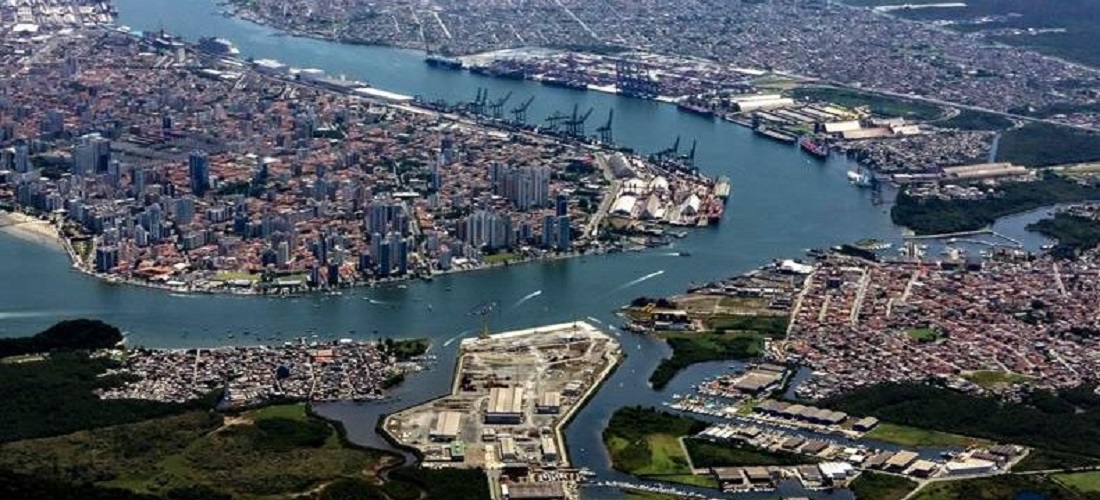
Completion of São Paulo beltway raises concerns over Port of Santos access
Feb, 15, 2024 Posted by Gabriel MalheirosWeek 202407
The completion of the Northern section of the São Paulo Beltway is expected to ensure smooth traffic flow in the state capital’s metropolitan region. Nevertheless, it could worsen congestion in the access to the Port of Santos if the third road connecting the continental highlands and the coast, as well as a second viaduct in Alemoa, are not built simultaneously.
Such an assessment arose after President Luiz Inácio Lula da Silva promised to allocate R$ 1.35 billion for the works. The funding will come from the National Bank for Economic and Social Development (BNDES).
The federal investment adds to the funds needed to make the project viable, which has a budget of R$ 3.4 billion and was awarded by the São Paulo State Government to the Via Appia consortium.
The concession contract, signed on August 9 last year, spans 31 years for both construction and operation. The consortium plans to invest R$ 2 billion in construction and an additional R$ 324 million for auxiliary projects. In the bidding process, a discount of 23.1% was applied based on the São Paulo State Government’s contribution, resulting in an estimated subsidy of R$ 1.07 billion for the State.
Subsidy
The São Paulo State Secretariat of Investment Partnerships (SPI) confirmed that the BNDES funding will cover the amount of the subsidy that the State would have to allocate to the project.
The winning bidder has one year to develop a revised engineering project. The work is expected to start and finish within two years, but the State wants to kick it off as soon as possible.
The completion of the Northern section of the Beltway is a key component of São Paulo’s upcoming infrastructure projects, made feasible through a partnership forged between President Lula and Governor Tarcísio de Freitas in Brasília on January 31. This partnership, facilitated by Chief of Staff Rui Costa, encompasses various projects, with the Santos-Guarujá underwater tunnel as its centerpiece.
The Project
The completion of the Northern section of the Beltway could divert 84,000 vehicles away from São Paulo, according to the BNDES. The section to be built is expected to have 19.7 kilometers of four-lane roads and another 26.1 kilometers of three-lane roads, both with a speed limit of 120 km/h, as well as 14 tunnels totaling 12 kilometers in length, or roughly one-quarter of the entire highway.
Relevance
Alessandro Lopes, a professor of Engineering and Architecture at Esamc Santos, says the completion of the Northern section is key for urban mobility and cargo transportation in the São Paulo Metropolitan Region.
“However, the increase in road capacity may result in changes in traffic patterns and impact congestion in Santos.”
He points out that the simultaneous construction of the third lane of the Imigrantes Highway and the second viaduct in Alemoa would be an invaluable complementary strategy to prevent the worsening of bottlenecks in road access to the Port of Santos.
“This approach would allow for a more balanced traffic distribution and improve the flow of cargo transport to the Port, ensuring a more sustainable and efficient urban development.”
Lopes notes that integrating these works with urban mobility and logistics solutions is essential to ensure that the Northern section of the Beltway adds to the development of the region, while “avoiding excessive congestion and promoting a more integrated and effective road system.”
Ivam Jardim, a technologist in Logistics and Transport and partner and consultant at Agência Porto Consultoria, also highlights the positive impact of the project for the São Paulo Metropolitan Region, as it will remove heavy truck traffic from the infamous Tietê Marginal.
Trucks coming from the Dutra and Fernão Dias highways will experience optimized routes, cutting down travel time and expenses. Currently, the traffic, which already causes congestion in São Paulo, will have a ripple effect across the mountain range roads and access points on both sides of the Port of Santos
Furthermore, Jardim adds that another project that will impact and generate increased road traffic is the deepening of the access channel at the Port of Santos.
“When completed in its first phase, it will increase the capacity of operations, allowing a higher volume of containerized cargo, which highly depends on roads to reach the port.”
Source: A Tribuna
Click here to read the original news report: https://www.atribuna.com.br/noticias/portomar/trecho-norte-do-rodoanel-deve-agravar-os-gargalos-no-porto-de-santos
-
Shipping
Aug, 04, 2022
0
Lloyd’s to insure Black Sea grain shipments for up to $50M each
-
Shipping
May, 17, 2023
0
Podium switch? CMA CGM tipped to edge past Maersk in the liner rankings
-
Ports and Terminals
Dec, 27, 2021
0
Portocel (ES) builds new infrastructure to handle granite
-
Ports and Terminals
Jul, 19, 2021
0
Santos ready for New Panamax 366-meter vessels


